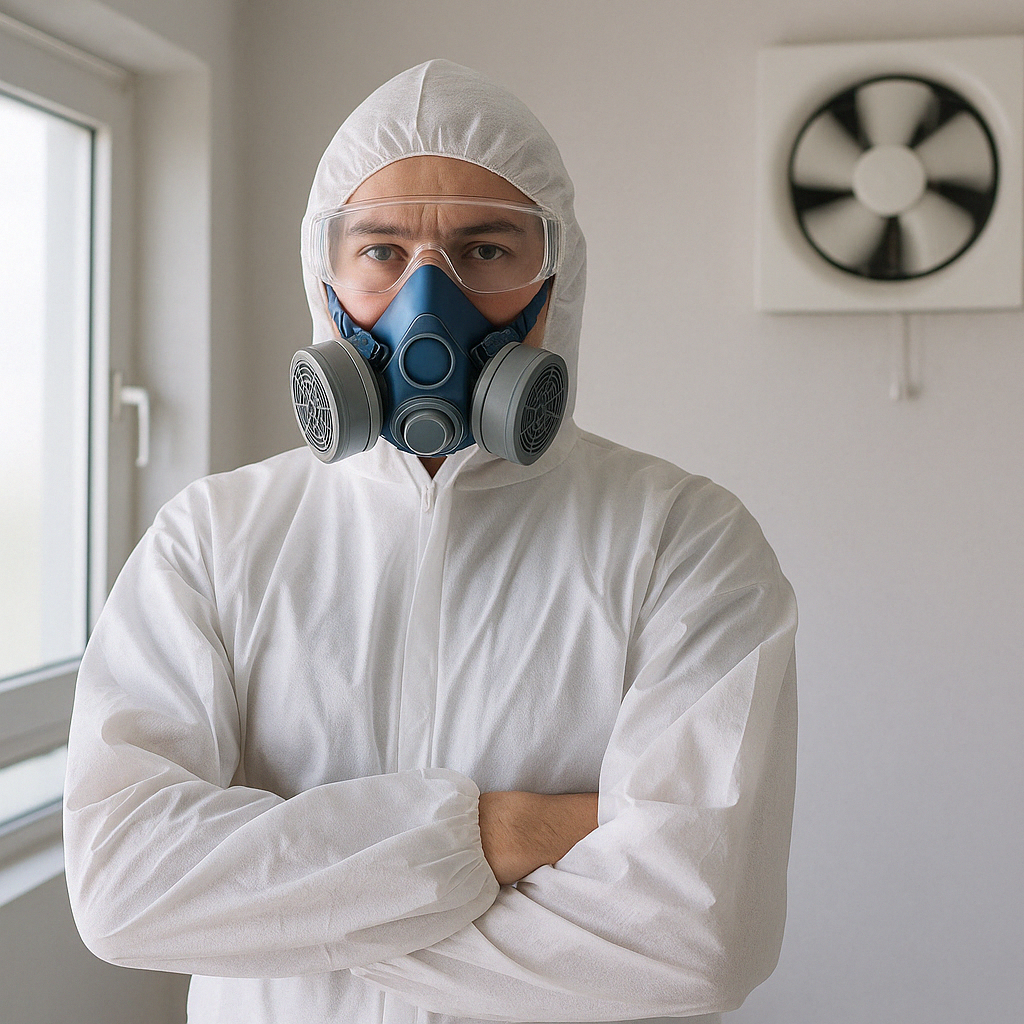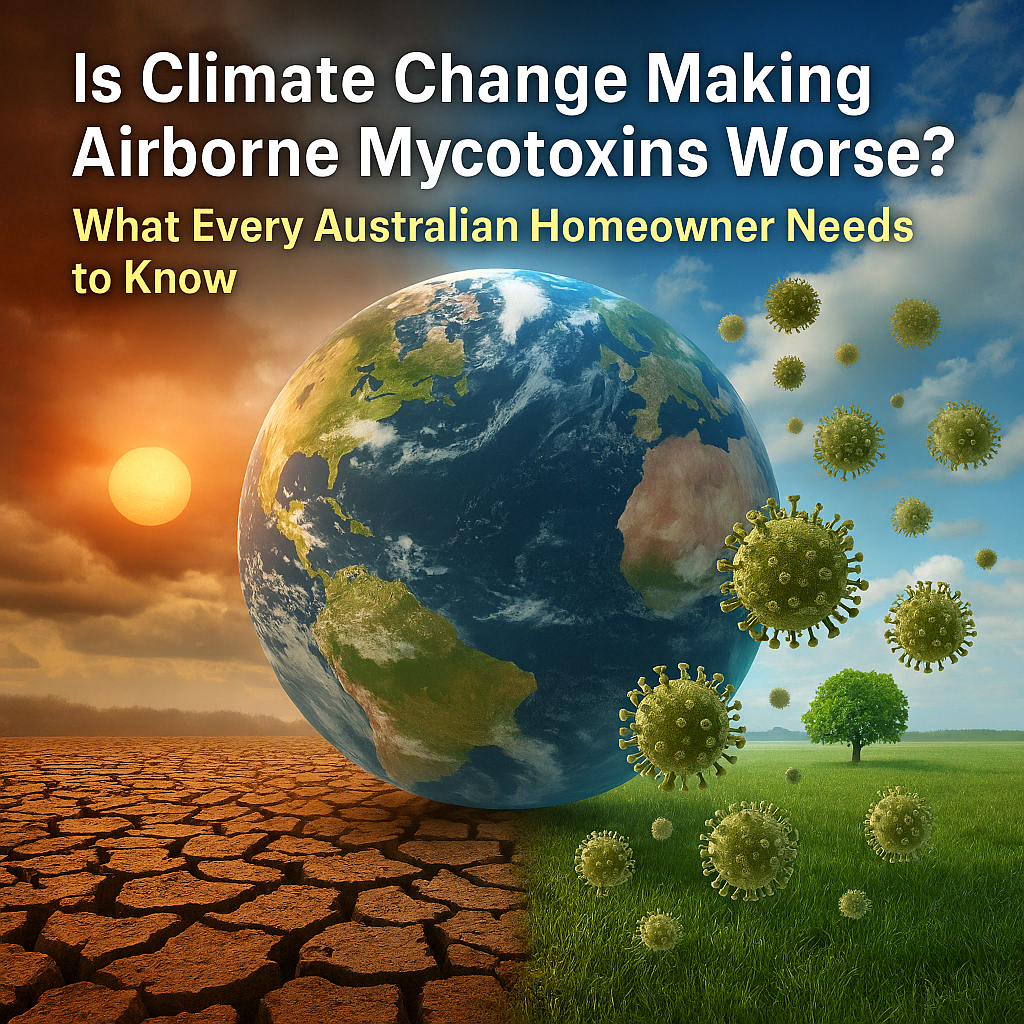
Is Your Home at Risk? Why Personal Protection and Ventilation Are Crucial for Mould Safety
Introduction
Mould is a silent invader that can spread rapidly in damp and poorly ventilated spaces. While it may seem harmless at first, mould can cause significant damage to property and, more alarmingly, serious health issues.
Disturbing mould during cleaning, renovation, or even through normal household activity can release spores and toxins into the air. Without proper personal protection and ventilation, you’re risking your health and spreading contaminants throughout the property.
That’s where The Mould Group comes in. As experts in mould detection, testing, and remediation, they understand how essential it is to control exposure using the right safety gear and ventilation strategies.
What Is Personal Protection and Ventilation and Why Does It Matter?
Personal protection and ventilation are two key strategies in mould control. Personal protection refers to the use of equipment like respirators, gloves, and protective suits to reduce direct exposure. Ventilation involves controlling air movement to prevent the accumulation and spread of harmful mould spores.
Together, these strategies form a critical line of defence for:
Homeowners cleaning up minor mould issues
Renovators disturbing mould in walls or ceilings
Business owners and property managers maintaining cool rooms in Sydney
Families concerned about indoor air quality
How Can Poor Mould Safety Impact Your Health?
Exposure to airborne mould spores can trigger a range of health issues. These include:
Respiratory problems like asthma, chronic coughing, or wheezing
Skin irritation and allergic reactions
Fatigue, headaches, or sinus congestion
Increased vulnerability in children, the elderly, and immunocompromised people
Without protective gear or clean airflow, mould exposure becomes a health hazard—not just an inconvenience.
What Causes Poor Indoor Air Quality During Mould Exposure?
There are several reasons indoor environments become contaminated with mould spores:
Disturbance during cleaning or construction
Lack of ventilation in bathrooms, kitchens, or basements
Improper storage or hygiene in cool rooms
Leaking roofs, broken pipes, or flood damage
Inadequate insulation or poor building materials
These conditions create a perfect storm for spores to circulate freely through air vents, ducting, and open spaces—especially if there’s no extraction or filtration in place.
How Can You Safely Test and Monitor for Mould in the Air?
If you suspect indoor mould contamination, don’t rely on sight or smell alone. Here are safe and effective ways to identify the presence of airborne mould:
Use air quality monitors that detect spore levels and humidity
Conduct professional air sampling to test for spores and toxins
Install HEPA-filter vacuums to collect settled spores in carpets and furnishings
Engage a certified inspector from The Mould Group to perform moisture mapping and surface testing
These steps not only confirm the presence of mould but also help to locate hidden infestations in walls, under floors, or behind cabinetry.
What Are the Best Personal Protection Methods for Mould Work?
When handling visible mould or cleaning affected areas, wear the following protective equipment:
N95 or P2 respirator masks to block spores and mycotoxins
Disposable gloves to prevent skin contact
Full-body protective suits to keep spores off clothing
Safety goggles to protect the eyes
Disposable shoe covers to avoid spreading spores
Never reuse disposable PPE, and always wash reusable gear thoroughly after use. It’s not just about protecting yourself—it’s about protecting your family and environment too.
How Can You Improve Ventilation to Control Mould Exposure?
Ventilation plays a major role in reducing airborne spores and humidity. Here’s how to optimise air circulation:
Install exhaust fans in bathrooms, kitchens, and laundry rooms
Open windows regularly to allow fresh air in and damp air out
Use air purifiers with HEPA filters to trap microscopic spores
Dehumidifiers are essential in cool rooms or basements
Cross-ventilation (open windows on opposite sides of a room) speeds up airflow
Effective ventilation stops spores from settling and discourages future mould growth.
Who Should Be Using Personal Protection and Ventilation?
It’s not just professional cleaners who need to take precautions. The following groups should take mould seriously:
DIY renovators stripping old drywall or lifting floorboards
Landlords and property managers maintaining shared spaces
Cool room operators in food storage and hospitality
Homeowners noticing visible mould or musty smells
Tenants and families living in damp apartments or townhouses
If you live or work in a building with past or present water damage, don’t take risks—protect yourself and your airspace.
Full inspections by The Mould Group include:
Air quality assessments
Infrared thermal imaging
Internal cavity checks
Comprehensive moisture analysis
This deeper inspection can uncover mould hotspots hidden behind walls, above ceilings, or beneath carpets—places you wouldn’t catch with a quick look.
Planning a Property Check? Learn About Costs First
If you’re ready to book a professional inspection, the next blog in this series will help.
We break down every aspect of pricing in How Much Does a Mould Inspection Cost in Brisbane? A Complete Breakdown.
From call-out fees to lab testing and remediation estimates, we cover what you need to know before making the call.
Don’t take chances with your family’s health.
Contact The Mould Group today to arrange safe testing and expert mould removal.
🔗 Follow us on Facebook for tips, safety updates, and real client success stories: The Mould Group Facebook Page
📝 Next blog in this series:
Airborne Aflatoxins and Animals: Livestock and Pet Exposure
Recent Post
Emerging Research
Are Airborne Aflatoxins More Dangerous Than We Thought? Emerging Research Reveals the Unknowns Introduction Mould is not just a cosmetic nuisance. It’s a living organism that, when left unchecked, releases toxic by-products into your environment. One of the most concerning of these by-products is aflatoxin—a dangerous type of airborne mycotoxin. While we know that ingesting […]
Climate Change and Airborne Mycotoxins
Is Climate Change Making Airborne Mycotoxins Worse? What Every Australian Homeowner Needs to Know Introduction Mould is more than just an unsightly problem—it’s a biological hazard that can compromise your health and damage your property. As it grows, it can release dangerous toxins into the air called mycotoxins. When these mycotoxins become airborne, they can […]
Airborne Aflatoxins and Animals
Are Your Pets or Livestock at Risk? Understanding Airborne Aflatoxins and Animals Introduction Mould is not just a concern for homes and people—it also poses a serious threat to animals. When mould spreads in barns, sheds, feed storage areas, or even inside homes, it can release aflatoxins—a dangerous type of airborne mycotoxin. These toxins can […]




